Expedition Log – BIOT Day 16
We’ve been seeing a great diversity of butterflyfishes here in BIOT, around 18 different species. Butterflyfish belong to the family Chaetodontidae and are consequently known as chaets by their most avid fans and researchers. Many chaets are corallivores or omnivores, feeding on coral polyps and tentacles, algae, fish eggs and small invertebrates and are typically found close to the reef. Other chaets are planktivores, feeding on zooplankton or phytoplankton; these species are found higher in the water column.
Many species of chaets mate for life and are found in heterosexual pairs, so if we find one during a fish survey we’re almost guaranteed to find a second nearby.
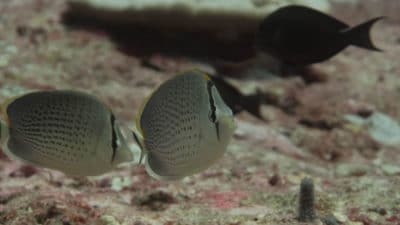
Spotted Butterflyfish pair, Chaetodon guttatissimus.
Other species, like the Black Pyramid Butterflyfish, Hemitaurichthys zoster, are schooling species. This species is a planktivore and feeds in schools above the reef, coming together in pairs only during breeding.
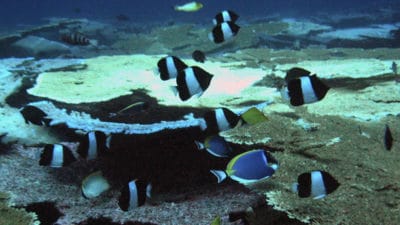
Black Pyramid Butterflyfish school, Hemitaurichthys zoster.
Butterflyfishes are known for their bright colors and patterns that make them easy to spot on the reef. They often have striking patterns of yellow, blue and orange with white and black bands or spots. These markings are thought to confuse predators. Fish have different visual perception to humans, however a number of species have been shown to perceive color and those who don’t still detect light and shade. The bold markings of butterflyfish could give them a brief moment to escape while their predator works out which end is their head or whether they are even a fish or not.
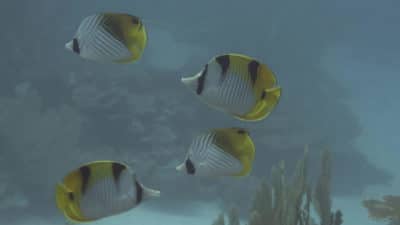
Saddled Butterflyfish, Chaetodon falcula and Threadfin Butterflyfish, Chaetodon auriga.
Butterflyfish are typically diurnal, actively feeding during the day and hiding in the reef to sleep at night. Many species have the ability to fade or dull their bright patterns during the night, allowing them to camouflage into the reef and keep safe from predation while sleeping.
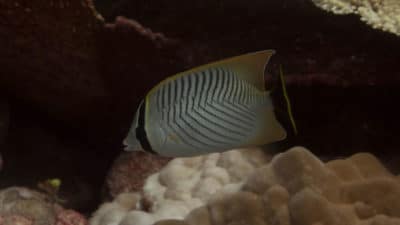
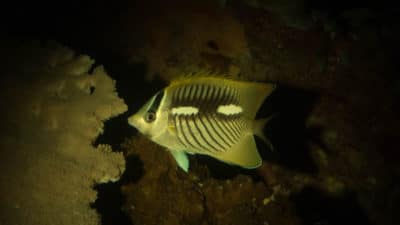
Chevroned Butterflyfish, Chaetodon trifascialis, during the day (left) and night (right).
(click-thru on images for greater detail)
While most chaets are easy to distinguish and identify due to their distinctive markings, some are a little trickier. A good example here in BIOT is the Teardrop Butterflyfish, Chaetodon interruptus, and the Zanzibar Butterflyfish, Chaetodon zanzibarensis. At a quick glance these two species look the same – bright yellow with a black eye bar and a large black spot on their dorsal flank. However, if one looks more closely you can see that C. interruptus has a black bar just in front of its tail, and the tail itself is white, whereas C. zanzibarensis is all yellow with the exception of the eye bar and black spot. The black spot of C. interruptus is slightly tear-shaped, hence its common name, while C. zanzibarensis has a more circular spot. It’s little things like this that keep us in the LOF fish team on our toes.
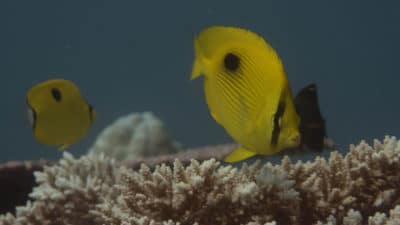
Teardrop Butterflyfish, Chaetodon interruptus, in the background with Zanzibar Butterflyfish, Chaetodon zanzibarensis, in the foreground.
A number of chaets have quite a wide range and many species we are seeing here in BIOT have been seen on other LOF missions in the Pacific and the Coral Triangle. These species include the Redfin Butterflyfish, Chaetodon trifasciatus, the Racoon Butterflyfish, Chaetodon lunula and the Threadfin Butterflyfish, Chaetodon auriga.
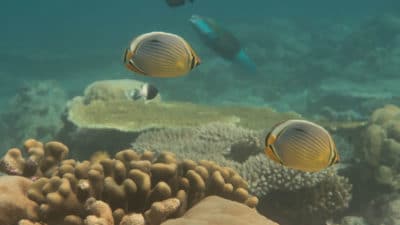
Redfin Butterflyfish, Chaetodon trifasciatus.
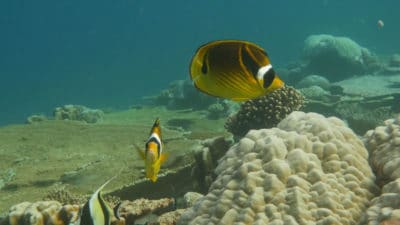
Racoon Butterflyfish, Chaetodon lunula.

Threadfin Butterflyfish, Chaetodon auriga.
Other chaets we’ve been seeing here in BIOT have a narrower range, limited often to the tropical Indian Ocean and sometimes the Red Sea and parts of Indonesia. These species include the Black Pyramid Butterflyfish, Hemitaurichthys zoster, the Yellowhead Butterflyfish, Chaetodon xanthocephalus and the Saddleback Butterflyfish, Chaetodon falcula.
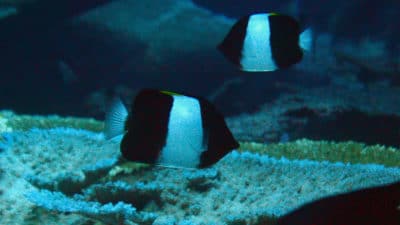
Black Pyramid Butterflyfish, Hemitaurichthys zoster.
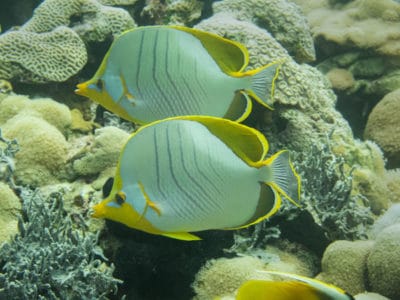
Yellowhead Butterflyfish, Chaetodon xanthocephalus.

Saddleback Butterflyfish, Chaetodon falcula.
While most divers love to see butterflyfishes because of their beautiful colors and tendency to be easily approached, scientists use butterflyfish as an indicator of reef health. This is especially true of the obligate corallivores (those that only eat coral), as they tend to disappear if there is a lot of damage to a reef and their food source declines. During this mission we’ve also witnessed many species feeding on diseased and bleached corals, possibly because the coral is in a weakened state and easier to feed upon.
Photos: 1,3-8 Stefan Andrews; 2,9,10,12 Kate Fraser; 11 Carly Reeves.